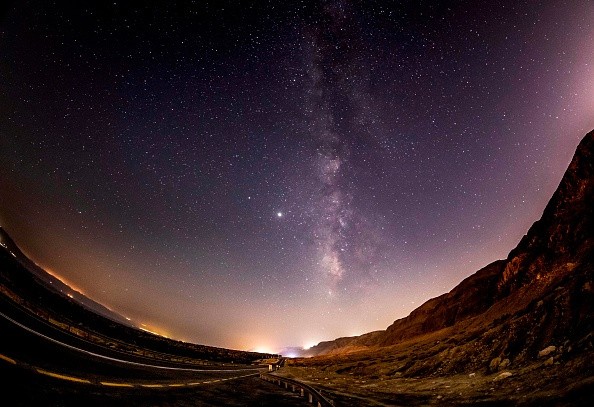NASA James Webb Space Telescope and the currently orbiting Hubble Space Telescope are being studied by UC Riverside's Department of Earth and Planetary sciences.

Related Article : NASA's Asteroid-Slamming DART Spacecraft Launch on SpaceX's Falcon 9 On Track, US Space Agency Confirms
Involved experts said that this is a part of their initiative to find other life forms in Earth-like planets and the smallest stars in the Milky Way Galaxy, which hosts the solar system.
"As a starting place, it is important to know whether small, rocky planets orbiting M-dwarfs have atmospheres," said the UCR doctoral student Daria Pidhorodetska.
She said that if they have their own atmospheres, there's a high chance these heavenly bodies could also support life. However, this is still a theory until NASA's popular space telescopes detect their alleged atmospheres.
NASA James Webb Space Telescope Now Being Studied!
According to PhysOrg's latest report, Pidhorodetska and her team want to lessen further the gap they are experiencing as they observe the M-dwarf stars, as well as other tiny exoplanets.

To do this, they are trying to identify if James Webb and Hubble Space Telescopes could detect these worlds' atmospheres. Aside from studying NASA's giant space scopes, involved researchers also modeled the different atmospheres they expect to find in the tiny stars and planets.
The new study is also joined by UCR astrobiologists Stephe Kane and Edward Schwieterman. Even space experts from NASA's Goddard Space Flight Center, Cornell University, the University of Chicago, and Johns Hopkins University are also included in the new study.
Other Details of UCR's New Space Effort
Florida News Times reported that the new UCR study's main focus is currently the M-type dwarf star called L 98-59.
This is only 8% of the total mass of the sun. On the other hand, it is roughly 35 light-years away from Earth.
Although it is quite far away and tiny in size, experts discovered that the radiation it produces is great for space observation.
Involved space researchers modeled different atmospheric scenarios that could possibly be found in L 98-56. These include hydrogen atmosphere, Venus-like atmosphere, as well as atmosphere dominated by water.
For more news updates about UCR's new space life initiative, always keep your tabs open here at TechTimes.
This article is owned by TechTimes
Written by: Griffin Davis
![Apple Watch Series 10 [GPS 42mm]](https://d.techtimes.com/en/full/453899/apple-watch-series-10-gps-42mm.jpg?w=184&h=103&f=9fb3c2ea2db928c663d1d2eadbcb3e52)



